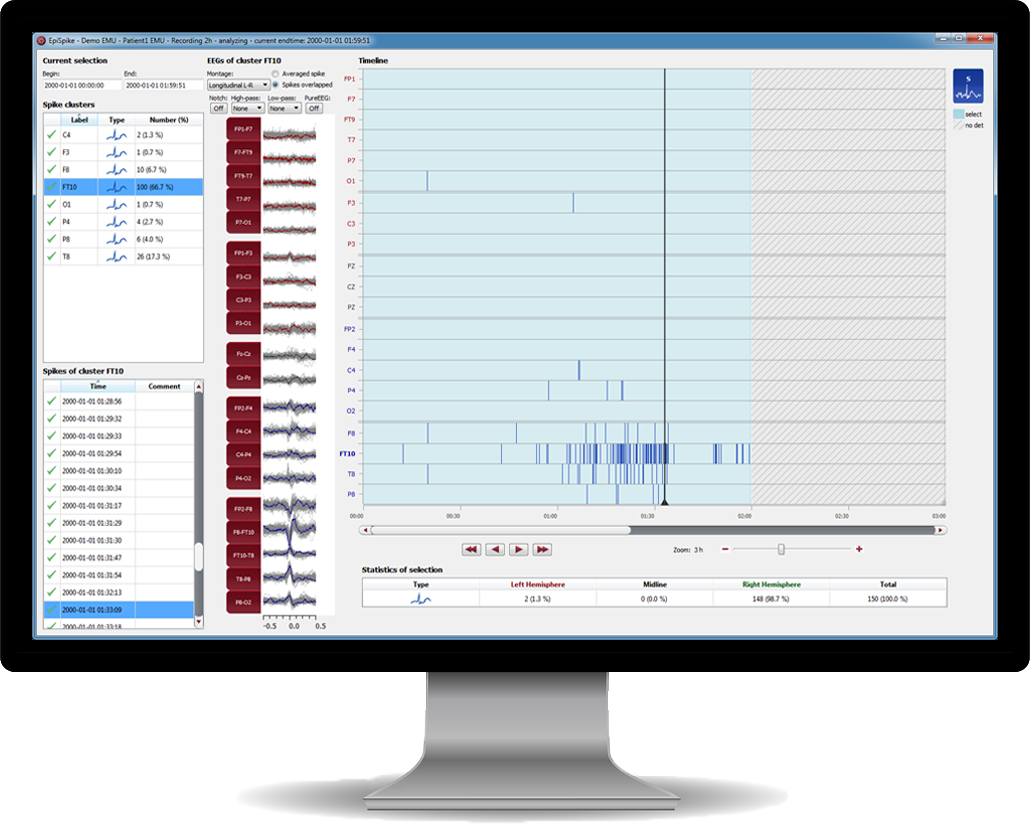Spike Detection
Highly reliable and easy to review
Do your patient’s EEGs show epileptiform discharges? How often do they occur? Get a reliable answer to these important questions within minutes.
Detecting spikes is an important step in both epilepsy diagnosis and pre-surgical workup. Counting spikes by hand is extremely time consuming. More patients within tighter budgets often prohibit a thorough analysis. encevis spike detection will help you to speed up this process. encevis scans through the data and shows you the results on one screen. You can then easily review all the detected spikes. It's fast, it's easy, it's reliable.
Are you interested in a trial version?
High sensitivity and specificity.
encevis detects spikes and sharp waves with a very high sensitivity combined with a high specificity. In the latest study, a sensitivity of 89% was measured together with a specificity of 70%. The detections are visualized in a way that they can be quickly reviewed. You can go through the detections in the markerlist or in the spike detection window that includes a timeline and a visualization of the spikes as clusters.
Spike clustering by localization.
encevis clusters the detected spikes by their localization and shows the detections over all electrodes on a timeline in a extra window. This enables you to get a good overview where and when spikes occurred. You may zoom in and out from 5min up to 24h. For each cluster, you can see the average spike or all the EEGs overlapped.
Spike statistics.
You would like to know how often the spikes occurred in a specific period of time? encevis counts the spikes for each cluster for any time intervall you may define. An overall statistics is also shown to provide you with an easy left/right comparison.
Quick and easy review.
Select the way you prefer to work: with the marker lists or on the timeline, with the mouse or the keyboard. The EEG is always shown automatically. Select the time intervall you want to focus on and save even more time. You may stop your review anytime and continue later, your results are automatically saved.
Validated in studies.
An artificial intelligence-based EEG algorithm for detection of epileptiform EEG discharges: Validation against the diagnostic gold standard. F. Fürbass, M. A. Kural, G. Gritsch, M. Hartmann, T. Kluge, S. Beniczky, Clinical Neurophysiology, April 2020.
More >>
